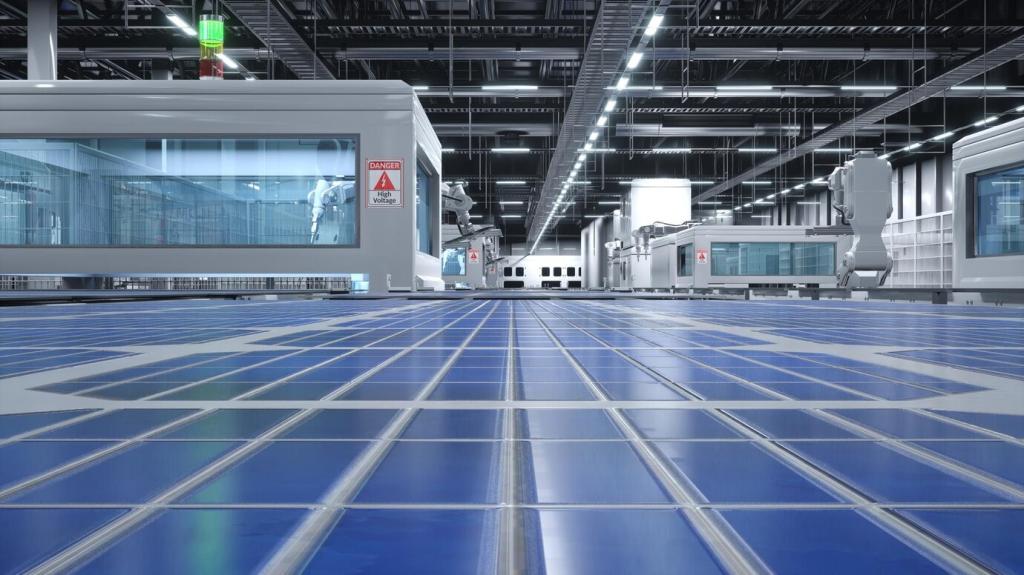Innovative Uses of Renewable Resources in Interior Design
Today’s chosen theme: Innovative Uses of Renewable Resources in Interior Design. Explore how bio-based materials and energy-smart strategies create healthier, stunning spaces. Read, comment with your ideas, and subscribe for future deep dives into practical, renewable design inspiration.

Bamboo, Cork, and Reclaimed Wood: Nature’s High-Performance Trio
Bamboo That Outperforms Expectations
Engineered bamboo panels and veneers can rival hardwood in strength, with rapid regrowth cycles that take pressure off forests. We’ve used vertical-grain bamboo for cabinetry, where its clean lines, stability, and warm tone deliver modern minimalism without sacrificing touchable comfort.


Cork Underfoot and Up the Walls
Cork flooring and acoustic wall tiles harvest bark without harming trees, offering springy comfort and natural sound absorption. In a family kitchen, cork softened foot fatigue during long cooking sessions, while its subtle texture diffused noise and created a calmer, friendlier mood.




Circular Design: Plan for Disassembly, Repair, and Reuse
Opt for mechanical fasteners, modular panels, and bio-based adhesives that allow gentle unbuilding. A modular wall system we designed unclips for access to wiring and cleaning, then reassembles in minutes, extending the system’s life and keeping renewable components in circulation longer.
Renewable Energy Inside: Daylight, Solar Glass, and Passive Comfort
Building-integrated photovoltaics can be part of skylights and facades, quietly producing electricity without bolted-on hardware. In a sunny reading nook, semi-transparent solar glass filtered glare, powered a task lamp, and became a daily reminder that interiors can contribute energy, not just consume it.
Renewable Energy Inside: Daylight, Solar Glass, and Passive Comfort
Clerestories, light shelves, and reflective finishes guide daylight deeper indoors, reducing reliance on bulbs. A home office positioned near east-facing windows delivered soft morning light and higher alertness, while plant-based shades modulated brightness, aligning work sessions with natural cycles for calmer productivity.
Renewable Energy Inside: Daylight, Solar Glass, and Passive Comfort
Cross-ventilation, ceiling fans, and thermal mass reduce cooling loads. Pair breathable wool curtains with operable windows to flush heat at night, then draw cork blinds during peak sun. These small, renewable-centric strategies add up to meaningful comfort without cranking the thermostat.
Healthy Finishes: Low-VOC, Plant-Based, and Beautiful
Linseed Oil Paints and Soap Finishes
Traditional linseed oil paints and soap finishes nourish wood while allowing it to breathe. We revived a bamboo desk with linseed oil and a soft soap rub, revealing depth in the grain and leaving a subtly herbal scent instead of the harsh fumes typical of synthetic coatings.
Algae Pigments and Bio-Inks With Personality
Algae-based pigments offer unexpectedly rich hues with minimal toxicity. We printed a botanical mural using a bio-ink derived from algae feedstock; its gentle matte finish reduced glare and quickly became the room’s calm focal point without off-gassing headaches or persistent chemical odors.
An Allergy-Friendly Makeover That Worked
One reader swapped solvent-heavy varnish for plant-based wax on reclaimed shelving and noticed fewer headaches within days. The shelves kept their luster, dusting became easier, and weekly messages from friends asked for product links—proof that healthy can be genuinely beautiful and practical.

Recycled-Glass Terrazzo With a Story
Countertops speckled with post-consumer glass sparkle like riverbeds. In one kitchen, fragments from a local bottling plant gave the island a regional narrative, while the durable binder allowed easy resealing—extending lifespan and keeping beautiful materials out of the landfill.

Aluminum With High Recycled Content
Aluminum frames made from high recycled content dramatically cut embodied energy. We chose powder-coated finishes with low-VOC credentials, pairing them with bamboo shelving. The contrast felt contemporary, and disassembly remained simple for future recycling—no messy composite layers to complicate separation.

Textiles Reborn Into Acoustic and Upholstery Panels
Wool offcuts and cellulose fibers can be pressed into breathable acoustic panels. In a media room, panels made from recycled textiles calmed chatter and controlled bass hum, while their renewable fiber makeup kept them compostable or recyclable at the end of their hardworking life.



